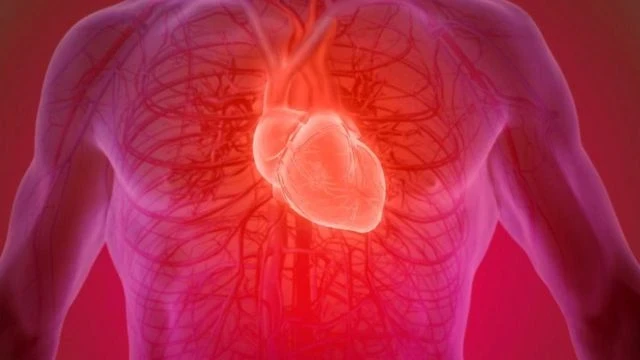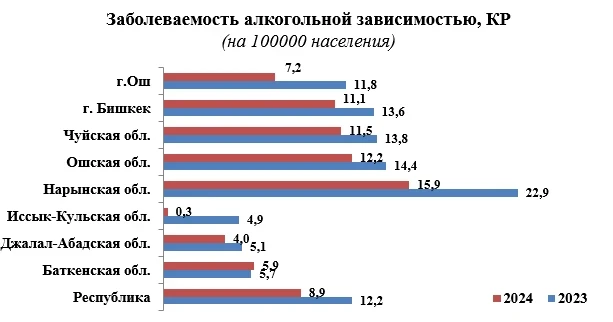Particular attention is paid to cardiovascular diseases: a pediatric cardiology service is actively being established in the country, as congenital heart defects are one of the main causes of child mortality.
We discussed this situation with pediatric cardiologist Daniyar Amatov.
Amatov serves as the chairman of the Kyrgyz Pediatric Cardiology Association and is an assistant at the Department of Faculty Pediatrics at KGMA, having experience working in leading clinics in both Turkey and Kyrgyzstan.
- Why do congenital heart defects remain relevant in Kyrgyzstan? What should parents expecting a child know?
- Congenital heart defects (CHD) are one of the leading causes of morbidity among newborns worldwide, and Kyrgyzstan is no exception: hundreds of cases with various heart development disorders are registered in the country every year. In conditions of limited resources and uneven access to specialized care, early diagnosis and parental awareness are critical.
- How often does cardiac arrest occur in the fetus and why is this important?
- Unfortunately, there are no separate data on fetal asystole — the cessation of cardiac activity in the fetus — in Kyrgyzstan. However, it is known that intrauterine fetal death (IUFD) is registered in an average of 6-8 cases per 1000 pregnancies in resource-limited countries. One of the reasons may be severe heart pathology in the fetus, which goes unnoticed due to insufficient access to early prenatal diagnosis.
- What are the causes of cardiac arrest in the fetus?
There are many medical reasons; however, the most common include:
- placental insufficiency and severe hypoxia;
- severe maternal infections, preeclampsia, Rh conflict;
- intrauterine heart developmental defects;
- genetic and chromosomal anomalies;
- complications of multiple pregnancies.
Moreover, in Kyrgyzstan, the situation is exacerbated by anemia in pregnant women, late registration for care, and limited access to modern diagnostic methods.
- Is it possible to prevent such complications?
- Yes, in most cases, it is feasible. Effective diagnostic methods include: high-quality ultrasound and fetal echocardiography; early and repeated screenings; timely detection of pregnancy complications; monitoring chronic diseases in the mother.
Although such studies are available in Kyrgyzstan, unfortunately, they are not universally accessible, leading to late diagnosis and the loss of important intervention opportunities.
- Are intrauterine heart surgeries performed on the fetus?
- The field of fetal cardiac intervention is actively developing in global practice — interventions on the fetal heart directly in the womb. These high-tech procedures are performed only in large specialized medical centers.
Currently, such operations are not performed in Kyrgyzstan. However, the development of technologies and international cooperation instills hope that such procedures will become more accessible in the future.
- What congenital heart defects are most common among children in Kyrgyzstan?
- According to studies conducted in Bishkek, the incidence of CHD is about 12.8 cases per 1000 children. The most common defects include:
- ventricular septal defect (VSD),
- atrial septal defect (ASD),
- patent ductus arteriosus (PDA),
- pulmonary artery stenosis and others.
- Why are heart defects so prevalent?
- Various factors can be the cause, including heredity and genetic syndromes, diabetes, hypertension, thyroid diseases in the mother. Viral infections during pregnancy, alcohol consumption, smoking, and exposure to toxic substances and pollutants can also influence this. A deficiency of folic acid and adverse exposures in the first 3-8 weeks of pregnancy, when the heart is forming, also play a role.
For Kyrgyzstan, anemia in pregnant women, environmental issues, and late visits to doctors are particularly relevant.
- Why is early detection of defects critically important?
- If a defect can be detected in the first hours or days of life, timely assistance can be provided to the child — stabilization, medication support, and preparation for surgery. This significantly improves the prognosis, reduces the risk of complications, and increases the chances of normal development.
Late diagnosis, on the contrary, can lead to serious consequences, including heart failure, pulmonary hypertension, brain damage, and even death.
- How are congenital heart defects currently treated?
- Treatment methods depend on the type of defect:
- medication therapy helps support the child before and after surgery;
- catheter interventions allow correcting many defects without open surgery;
- cardiac surgeries remain the main method for treating serious defects.
Modern medical technologies allow for surgeries even on newborns with very complex defects, providing them with a chance for a full life.
- How has the situation changed in Kyrgyzstan?
- Each year, the number of specialists increases, new medical centers open, and complex surgeries are performed with the participation of foreign cardiac surgeons. However, problems still exist:
- lack of qualified pediatric cardiac surgeons and intensivists;
- limited range of modern equipment;
- uneven access to medical care for regions;
- the necessity to send some patients abroad.
- What challenges do doctors face?
- Treating children with severe heart defects requires a large team and high technologies. Diagnosis is complicated due to the small size of the heart and the rarity of some defects. After surgeries, children require prolonged and expensive care.
The emotional aspect is equally important — doctors work under constant stress, realizing the value of every moment in critical conditions of newborns.
- What can future parents do?
- Much depends on the parents. Doctors advise preparing for pregnancy in advance, treating chronic diseases, taking folic acid and vitamins, avoiding alcohol and smoking, regularly undergoing ultrasounds and screenings, following the recommendations of obstetricians-gynecologists, and consulting specialists if there is a family history of congenital heart defects. These simple measures can significantly reduce the risk of giving birth to a child with severe heart pathology.
Congenital heart defects are a serious but solvable problem. Kyrgyzstan continues to develop pediatric cardiology and cardiac surgery; however, early detection of pathology remains key: the earlier it is diagnosed, the higher the chances for timely and quality medical intervention.
If society, the healthcare system, and future parents work together, it is possible to significantly reduce the number of severe cases and increase children's chances for a healthy life.









